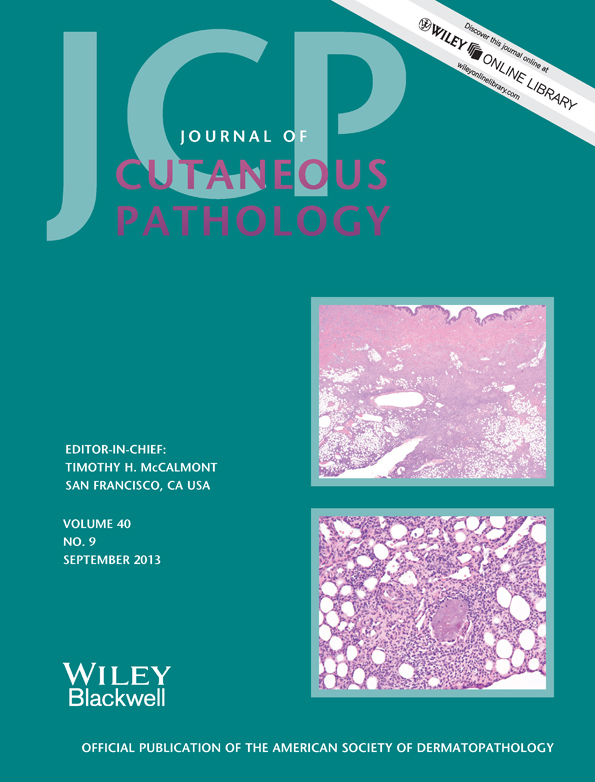Immunohistochemical expression of p16 in desmoplastic melanoma
Abstract
Desmoplastic melanoma can be difficult to distinguish from desmoplastic melanocytic nevi both clinically and histopathologically. Several attempts have been made to explore the use of ancillary studies to facilitate this distinction. Prior work has suggested that immunohistochemical expression of p16 could help distinguish sclerosing Spitz nevi from desmoplastic melanomas. We re-evaluated the expression of p16 in 22 desmoplastic melanomas (13 mixed and 9 pure desmoplastic tumors) and five desmoplastic melanocytic nevi (three desmoplastic Spitz nevi and two congenital melanocytic nevi with prominent dermal sclerosis). All desmoplastic melanocytic nevi were strongly immunoreactive for p16. Of the 22 desmoplastic melanomas, 6 tumors failed to label for p16, 10 were focally positive, but 6 tumors were diffusely immunoreactive. The latter finding is relevant, as it points to limitations in the diagnostic value of immunohistochemical staining for p16 for the diagnosis of desmoplastic melanocytic proliferations. Diffuse staining for p16 is not restricted to desmoplastic Spitz nevi but can also occur in a subset of desmoplastic melanomas, and this warrants caution in the use of this marker for diagnostic purposes.




